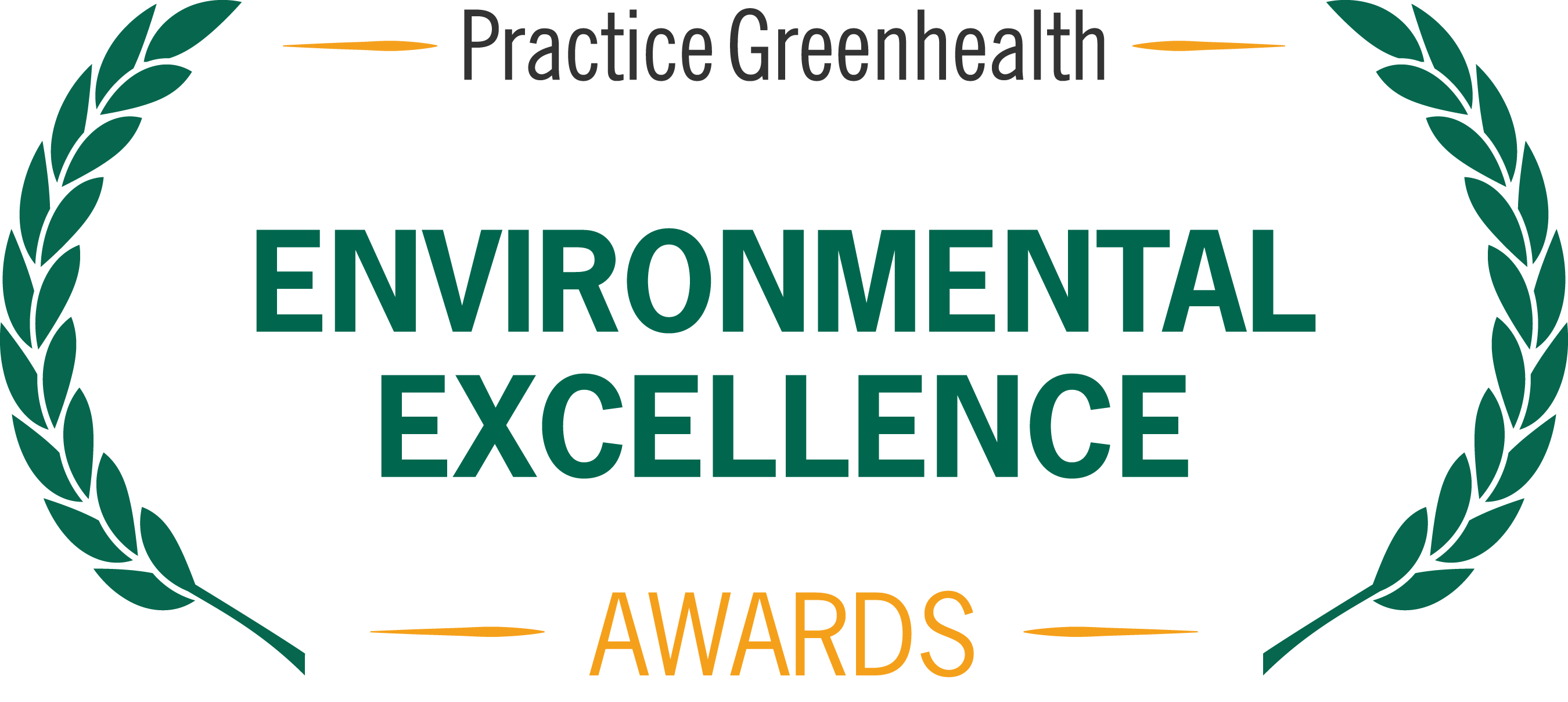Reducing energy waste and procuring renewable energy are some of the most effective steps that our member hospitals are taking to reduce their environmental impact and protect community health. There are many reasons energy should be an area of focus:
- Inpatient health care is ranked by EPA as the second-largest commercial energy user in the United States.
- Health care facilities consume close to 10% of the total energy used in U.S. commercial buildings and spend more than $8 billion on energy every year.
- The health care sector is responsible for 8.5% of U.S. greenhouse gas emissions.
The challenge for health care systems is to “do no harm” by working to eliminate the negative health and climate impacts of our energy consumption while enhancing patient outcomes and minimizing costs. With renewable energy sources like wind and solar already outcompeting dirty energy in most of the country, this goal is becoming increasingly achievable and practical – many Practice Greenhealth member members have found they can significantly increase energy efficiency and shift their energy mix to clean, renewable sources without huge capital outlays by using a variety of strategies.
Hackensack University Medical Center embarked on a two-phase energy conservation project that when complete will result in annual utility cost savings of $1.06 million.
Practice Greenhealth has cultivated resources and created tools to help our members identify and address their energy usage step-by-step.
Step 1: Track, measure, and benchmark current energy use
Accurate energy tracking and management tools help hospitals identify underperforming buildings, verify the effectiveness of any efficiency efforts, and identify opportunities to improve.
- EPA’s benchmarking starter kit
- Data 101 Series - How to Conduct an Energy Baseline
- Energy Impact Calculator
Step 2: Set ambitious energy goals
As technology improves and costs continue to decline, more promising energy reduction strategies are available and accessible to health care institutions. Setting clear goals to improve energy efficiency and shifting to renewable energy will help drive impact, identify key partners, and hold your team accountable. There are a host of governmental agency tools to help with energy goal-setting. Practice Greenhealth experts frequently guide members through the process to identify the materials that will be most useful. You can also start with the goals established in the leaner energy challenge and by committing to 100% renewable electricity by 2030.
Additional recommended reading:
- Department of Energy Better Buildings Solution Center
- EPA’s ENERGY STAR Guidelines for Energy Management
- EPA’s Green Power Partnership
Step 3: Implement clean energy practices
Energy reduction practices fall into two major categories:
- Energy efficiency: The cleanest and cheapest energy in the world is energy you don’t use. By utilizing tactics such as retro- and continuous commissioning, lighting modifications, supplemental load reduction for HVAC systems, “rightsizing” air distribution systems, beneficial electrification, and heating and cooling upgrades, you can reduce the need for energy.
- Renewable energy: Replacing conventional energy with clean, renewable energy technologies such as solar, wind, geothermal, and other renewable sources can reduce reliance on fossil fuel combustion for energy, save your institution money, and reduce the negative health impacts of pollution in the communities you serve.
Developing a Strategic Energy Master Plan (SEMPs) is a key strategy. Organizations like Mass General Brigham in Boston, Massachusetts used a SEMP to help mitigate annual price increases of 1.5% in 2008 by identifying a reduction goal, increasing efficiency, and a host of other measures including implementing renewable energy. These approaches can help overcome barriers like finances or limited infrastructure and enable a hospital facility to procure onsite or offsite renewable energy generation.
Step 4: Report and analyze impacts
Practice Greenhealth generates a Sustainability Benchmark Report every year to track sustainability efforts and evidence-based programs. The data from our members drive the Environmental Excellence Awards, which recognize hospitals and health systems for leadership in sustainability best practices in areas including leaner energy. The dataset from the Practice Greenhealth network is invaluable and can guide hospitals to set targets. For example, in the 2020 benchmark report, the average energy intensity (EUI) score was 217. An EUI score is a measure of a facility’s electrical and gas usage over a 12-month period. Almost 70% of Practice Greenhealth award winners have a written plan to reduce energy use with timelines and goals, and the energy savings per facility was over $40,000.
|
 Get recognized for your achievements
Get recognized for your achievements